Prickly Pear Cactus Growth Stages
With its tasty fruit and unique resilient nature, prickly pear cactus holds fascinating appeal for gardens and cuisines across arid regions. Join me as I explore the prickly pear cactus growth stages , from germination to cultivation insights unlocking its scrumptious potential right in my own backyard!
Introduction
Prickly pear cacti belong to the large Opuntia genus containing over 300 species. Most hail from America’s deserts and Mexico, thriving in dry, exposed sites. The iconic paddles represent modified stem segments covered in protective clusters of barbed spines.
While most prickly pear cactus bear edible fruit known as tunas, one stands out – the prolifically fruiting Opuntia ficus-indica. Often called barbary fig, this variety stars for its expansive growth habit and high quality yields, easily producing 50 pounds of sweet, seed-filled tunas from a mature specimen!
For more information more about gardening you can visit: 17 Identification Trees With Large Heart Shaped Leaves.
Growing Needs & Care

Prickly pear cactus brooms require well-drained sandy soil and need no supplemental water once established thanks to expansive shallow root structures efficiently absorbing every drop of scarce rainfall.
Actively growing in spring and summer when temperatures climb above 55°F, the plants remain dormant and choked of moisture through frigid winters.
I take care that involves providing maximum sunshine, shelter from severe cold snaps and occasionally fertilizing to replace depleted nutrients to prickly pear cactus seedlings where rainfall proves scarce.
These cacti grow actively during warm seasons with sufficient water available in spring and summer.
They become dormant in winter when temperatures drop below 55°F, requiring very sparse irrigation until warmer weather returns. I avoid too much winter water which may rot roots since metabolic processes shut down seasonally.
Caring for prickly pear involves providing the following ideal conditions as we have also discussed the caring for Brussels Sprout in: Brussels Sprout Plant Stages
- I provide full sun exposure
- I use sandy, gritty soil with excellent drainage
- I provide very minimal watering from fall through winter dormancy
- I try to shelter from severe winter frosts and freezes
- I use occasional fertilizer during the growing months
By aligning cultural practices with the natural seasonal rhythms and native habitat preferences of prickly pear cactus, I think they will thrive and fruit vigorously.
Growth Habits & Rates
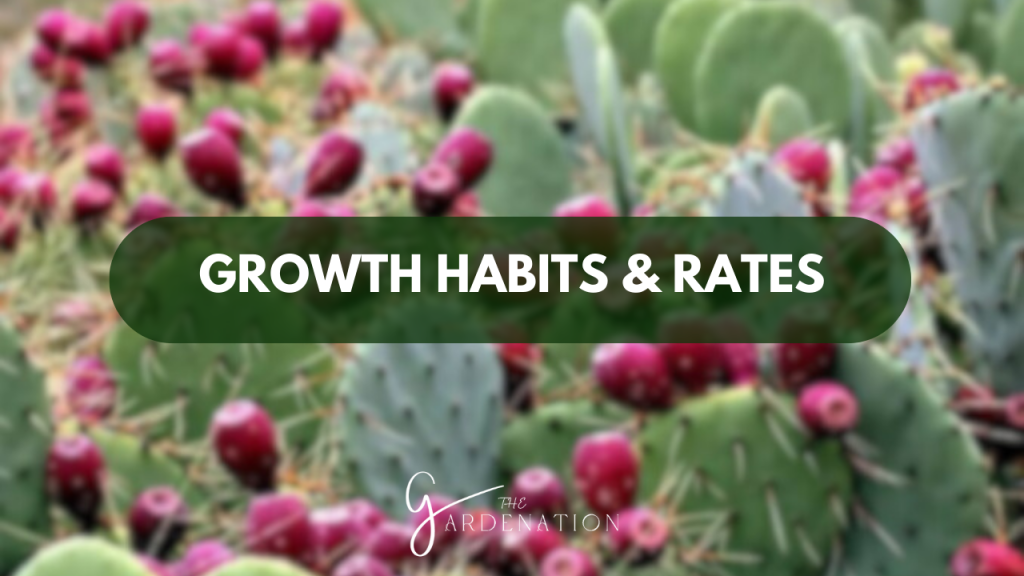
Prickly pear cactus brooms expand slowly but steadily given adequate conditions. I expect upright growth around half a foot annually for single stemmed trees topped by pad clusters reaching similar width expansion when mature.
But most prickly pear cactus grow modestly sized when cultivated beyond native habitats.
Stem segments
The iconic oval, flattened stem segments (pads) emerge singly at first, then proliferate into clusters as the plant matures. More branch segments also form over time from the main trunk, extending width.
Mature height
Mature height reaches around 4-5 feet for most upright tree-like varieties. Larger types may attain 10-15 feet tall given many years to establish in native desert habitats. Width can span several feet across at maturity as pad clusters expand horizontally on branches.
Growth rate
The growth rate averages about 6 inches vertically per year. So I expect upright expansion of around half a foot annually for single stemmed trees. Pad clusters elongate at a similar pace, potentially adding a foot in diameter each year.
Smaller prickly pear species growing in higher altitudes with shorter warm seasons struggle to reach even 5 feet tall after many years. They spread widthwise even slower.
So while fast growing compared to many cacti, prickly pear expansion remains modest for most garden settings beyond native desert climates. With the right conditions they persist for decades, eventually achieving tree-like heights and spans.
Prickly Pear Growth Stages
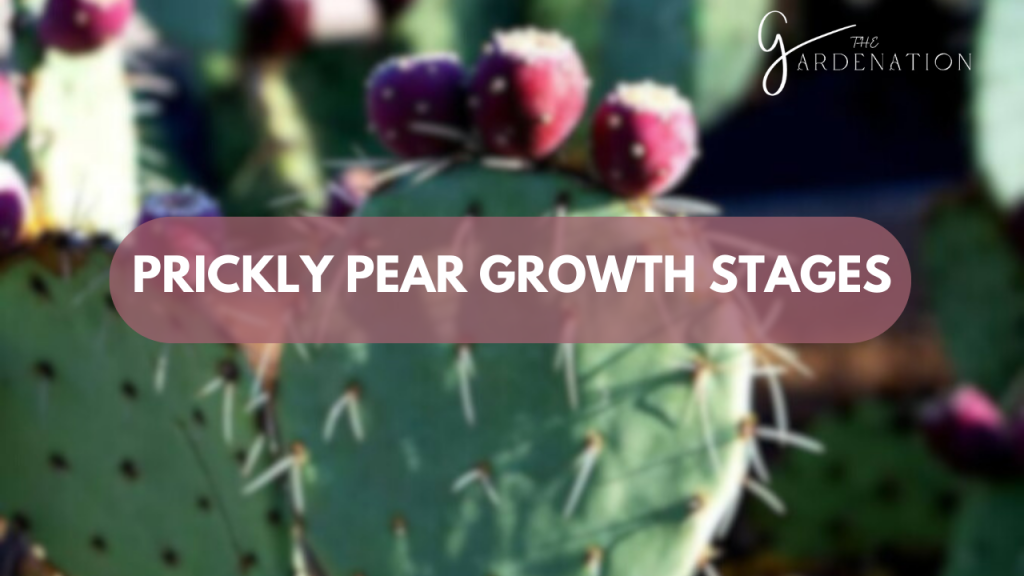
Now let’s explore the prickly pear cactus propagation, marveling at how these alien shapes transpire from humble seeds into flowering desert prize fruits!
Seed Germination
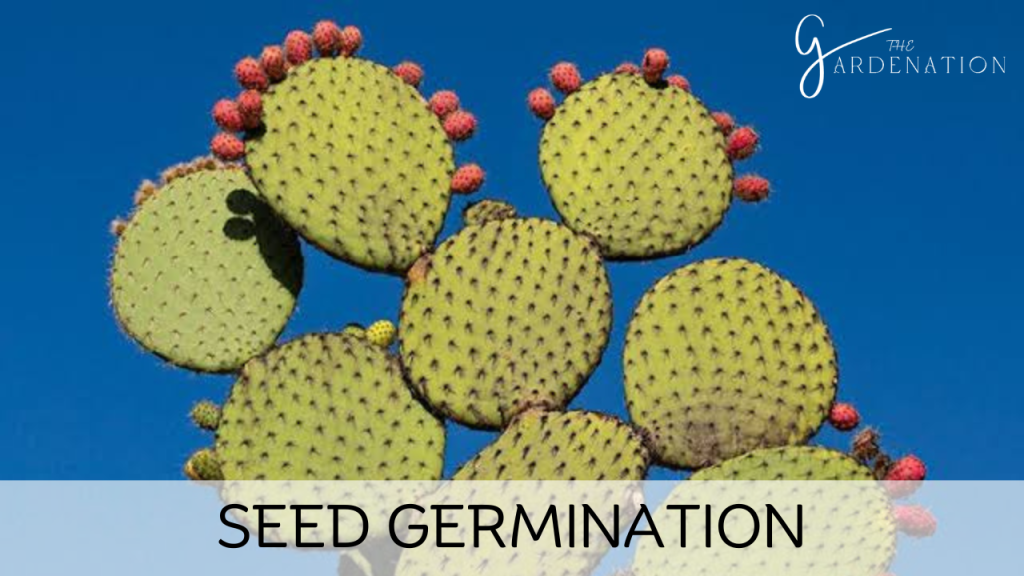
Prickly pear seeds germinate sporadically in nature, making prickly pear cactus propagation from cuttings the norm. Still, seeds sown indoors yield 30% success emerging the following season.
Root initials anchor via the hilum followed by the embryonic root bursting forth seeking moisture while protective spines suggest water conservation even this early!
Seedling Stage
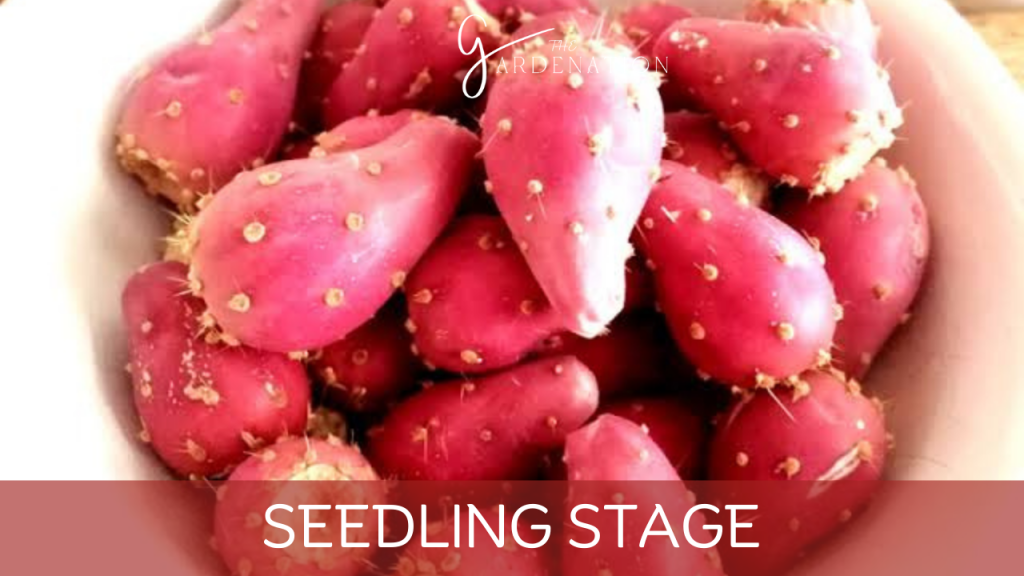
Early prickly pear cactus seedling growth focuses underground – plump white roots proliferate stabilizing the small emerging plant. Around 6 weeks later, the rounded shoot pops above soil.
The first true leaf follows showcasing tiny hair-like glochids among emerging spines – an inauspicious start for such a peculiar looking plant!
But the tiny prickly pear cactus seedling slowly expands additional pads preparing for its strange destiny. Do checkout seedling stage of Butternut Squash here: Butternut Squash Growing Stages
Vegetative Growth

Energy now flows toward pad cluster expansion for the next few years, increasing photosynthetic surfaces to power later fruiting. More stems form and pads widen, displaying the iconic oval platycladus lined in hardy spines tipped in irritating barbed glochids. Shallow roots readily absorb surface rainfall.
I give prickly pear cactus brooms warmth and light and it transforms steadily from odd tiny sprouts into a sculptural ever expanding marvel!
Flowering
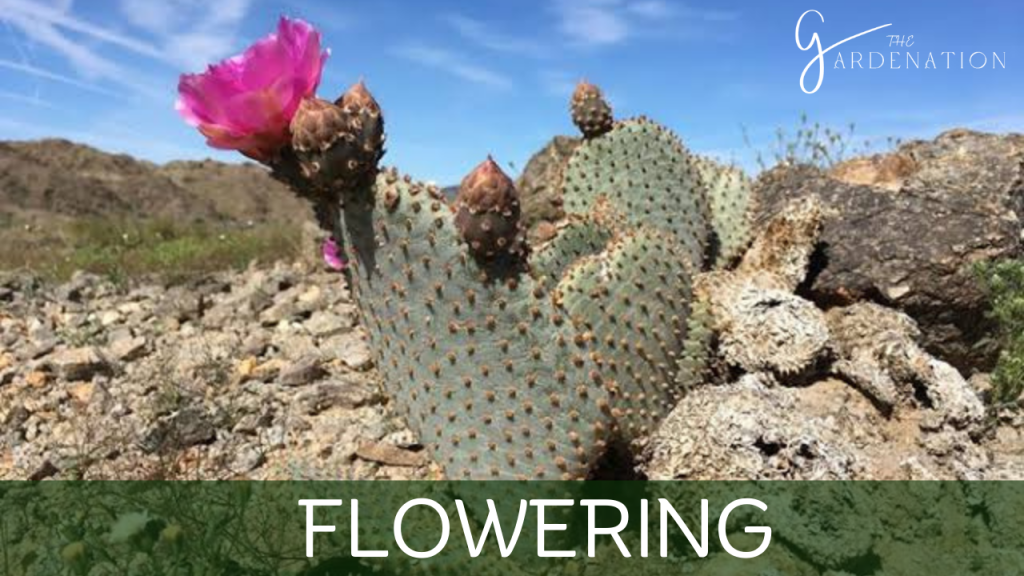
As plants mature, beautiful prickly pear cactus brooms appear by late spring – large yellow, orange, red, purple or white funnel-shaped primal blooms among the fierce spines centering prominent stamens. Petals open fully in the morning then fade by evening for a May-July showy display.
Botanically, ovaries sit below tepal whorls and collect pollen through the stigma and style. Now fruit initiation can commence given successful fertilization!
Pollination
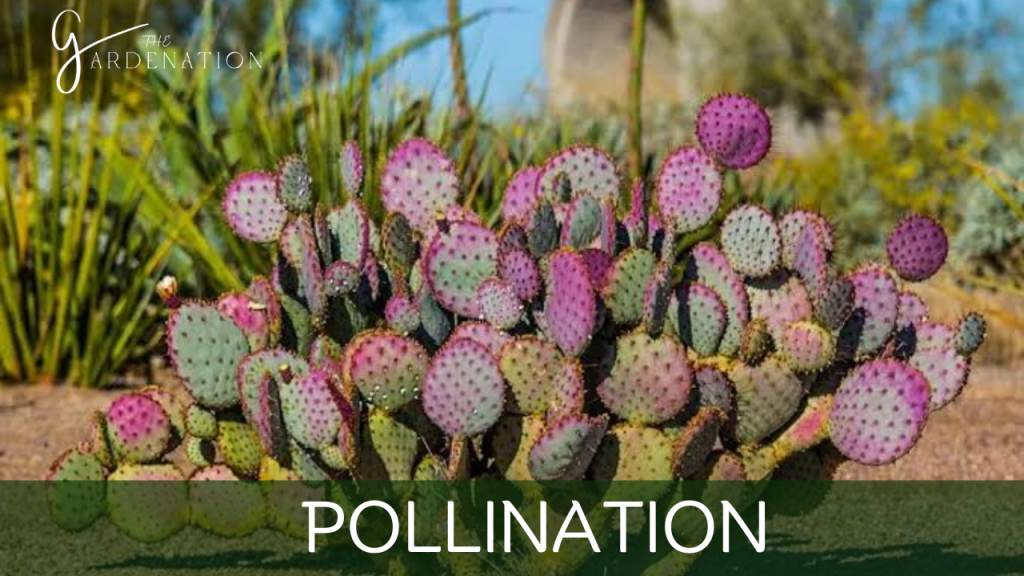
Opuntia ficus-indica blooms prove self-fertile but nearby plants increase fruit quantity. Bees bumbling between blooms prove the prime transfer mechanism followed by ants and wasps.
Later season flowers also lure birds and bats ensuring thorough pollination from every available carrier!
A fascinating cooperative strategy centered around irresistible sweet floral nectar.
Fruit Development
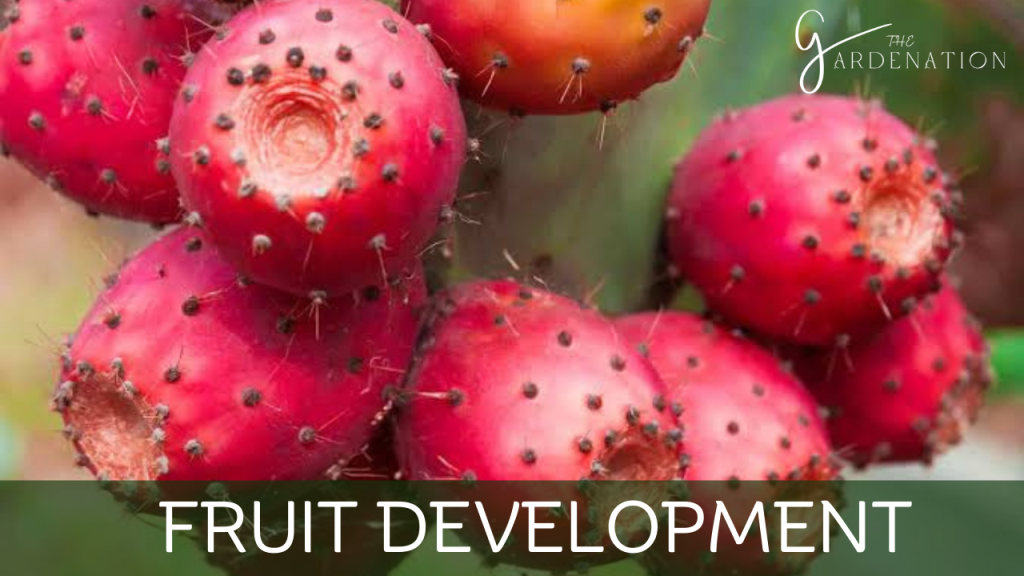
Successfully passing through pollination, fertilized ovaries of prickly pear cactus brooms expand gradually into fleshy green then reddish purple pear shaped fruits filled with small hard seeds over three months.
The surrounding whitish pulp separates from the peel when ripe, splitting at the base to offer delicious flavor celebrated worldwide as an ancient food.
Even unpollinated flowers form seedless then padless fruit which is easily propagated vegetatively yielding identical plants!
Harvesting Ripe Prickly Pear Fruit
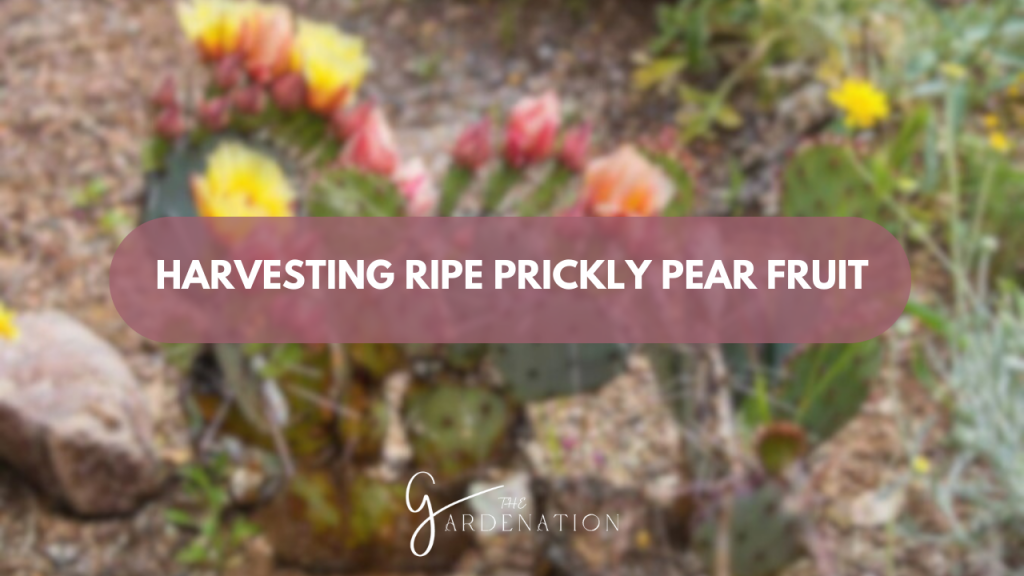
In arid zones, prickly pear cactus propagation peaks by late summer, indicated by deepening red skin signaling high sugar content. I carefully twist ripe fruit sideways to pluck without gloved hands. I store intact pears max 2 weeks under refrigeration.
I remove spines and skin, dice pulp removing seeds to produce sweet jelly spreads, beverages and jams – an age-old ritual extending the succulent produce initially nurtured from tiny sprouting prickly pear cactus seedlings!
I’ve come full circle realizing the marvel prickly pear cactus growth stages represent in their unique form and growth habits culminating in such prized edible treats.
This brief guide on prickly pear cactus growth stages hopefully reveals helpful insights on cultivating prickly pear cactus brooms at home from germination to harvesting of vibrant, flavorful fruits!
Frequently Asked Questions
How fast does prickly pear cactus grow?
In ideal conditions, prickly pear cactus growth stages average around 6 inches vertically per year but plants remain relatively short and shrubby. Maximum heights reach 15 feet for some tree-like species. Pad clusters expand horizontally at similar rates on branches eventually spanning several feet in diameter when mature.
What temperature is too cold for prickly pear cactus?
Prickly pear cacti thrive in hot, arid deserts and require minimum temperatures above 15-20°F depending on the variety and exposure to remain cold hardy through winter dormancy. Special winter protections help shield prickly pear cactus brooms from extreme cold in areas prone to hard freezes.
Which animals eat prickly pear cactus?
Several desert dwellers like wood rats, jackrabbits, tortoises, pack rats and peccary rely on prickly pear pads, fruit and flowers for food and moisture sustenance. Larval moths and a few other insects also feed on select Opuntia species when availability proves scarce. Harvesting fruit must balance saving some for hungry wildlife!
What does prickly pear fruit taste like?
The ripe red or purplish pear shaped Opuntia fruits offer a sweet yet slightly tart tropical flavor often described as a mix of watermelon, bubblegum and cinnamon. Texturally the pulp feels gritty from small hard seeds. The taste and pulp consistency create refreshing agua fresca drinks or unique fruit jelly spreads best pairing sweetness with a hint of acidity from lemon or lime juice. Some also liken the flavor profile to juicy Bartlett pears with a dash of citrus!
How to grow prickly pear cactus?
I cite them in the sunniest, hottest location possible. I also protect new plants from intense cold until the roots establish then watch them grow steadily. I fertilize lightly to fuel fruiting and prune damaged pads. I take care when handling the sharp barbed spines.
Follow these basic prickly pear cactus growth stages tailored to your climate and enjoy the curious, tasty prickly pear cactus brooms for years to come!

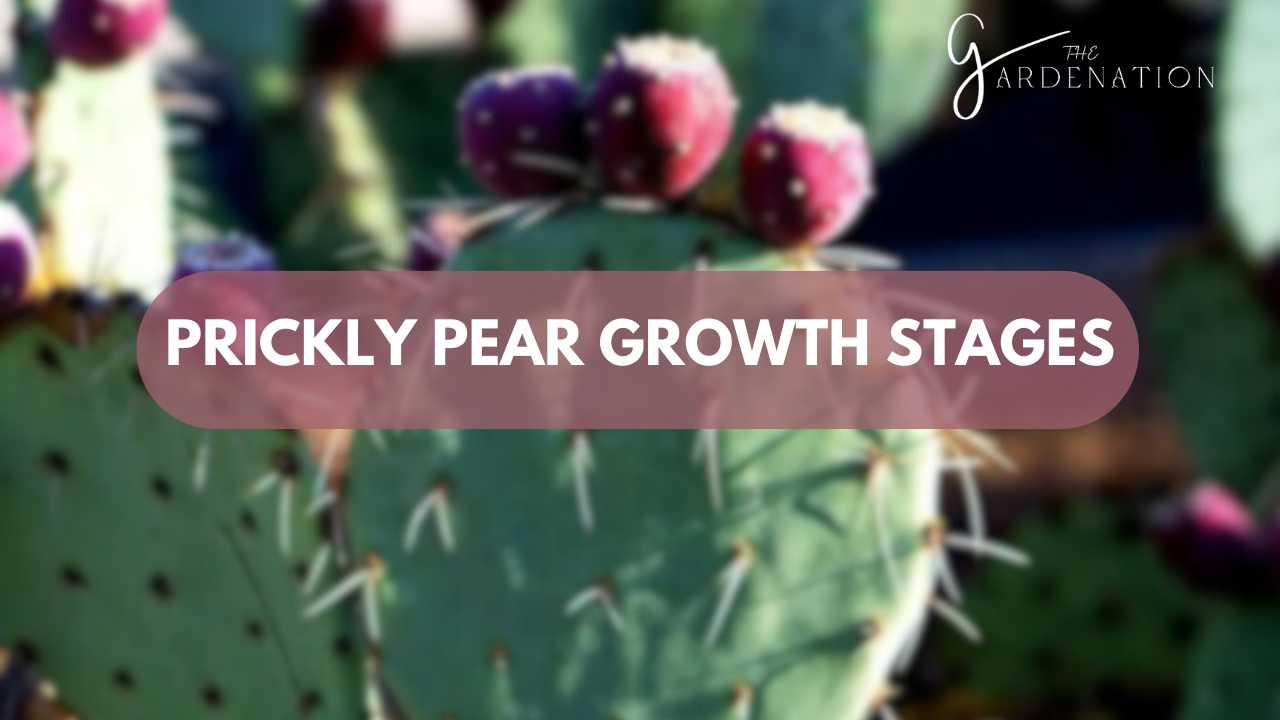
2 Comments